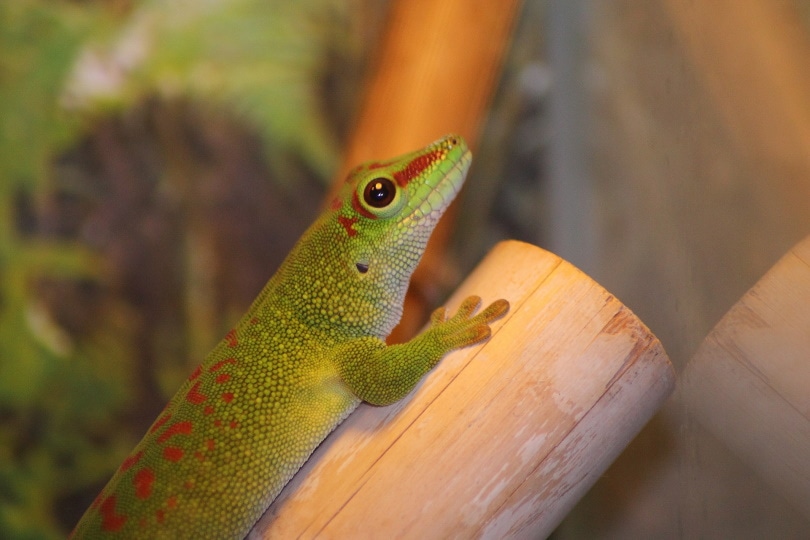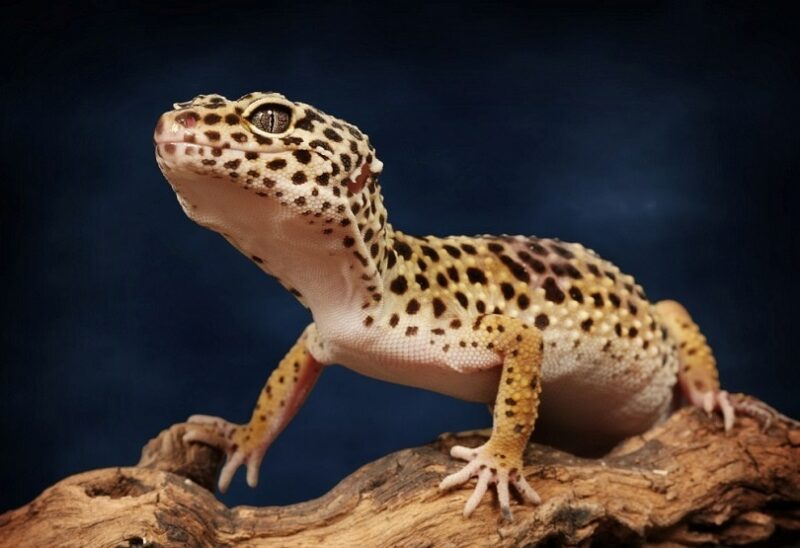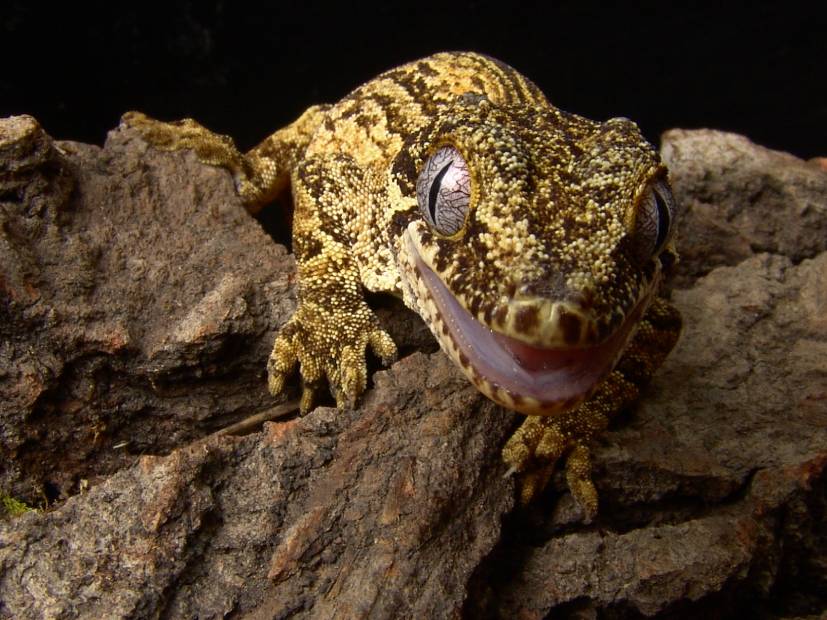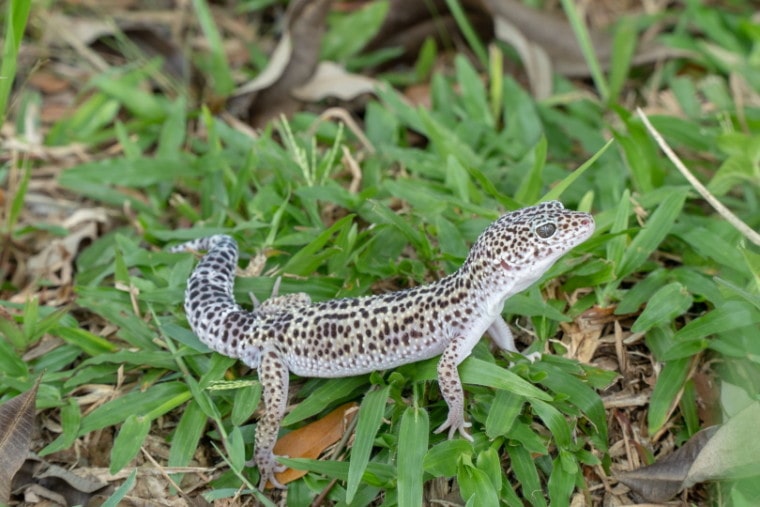
Super Snow Leopard Geckos aren’t actually their own species. They are simply a different coloration of the usual Leopard Gecko. Therefore, they typically require very similar care. If you’ve ever cared for a Leopard Gecko before, then you should have no trouble taking care of this lizard. Even if you’re new to the lizard world, this species is remarkably easy to take care of and a good place for beginners to start.
The Leopard Gecko has been bred in captivity for over 30 years. Most of the ones you find in pet stores are captive-bred, which makes them more adaptable and easier to care for. Many people call these lizards the “friendly dinosaur” due to their laidback nature.
Quick Facts about the Super Snow (Mack) Leopard Gecko
| Species Name: | Eublepharis macularius |
| Common Name: | Leopard Gecko |
| Care Level: | Low |
| Lifespan: | 10–20 years |
| Adult Size: | 6.5–8 inches |
| Diet: | Live insects |
| Minimum Tank Size: | 20-gallons |
| Temperament & Humidity: | 75–85 degrees F; 30% to 40% humidity |
Do Super Snow (Mack) Leopard Gecko Make Good Pets?
Super Snow Leopard Geckos often make very good pets, especially for beginners. They are often very small and docile. Many can be handled with some ease, though that isn’t because they like to be handled. Their care requirements are minimal. You can even leave them alone for several days if you need to.
Out of all the lizards out there, these are some of the easiest to take care of. They don’t make any noise and require much attention. Their tank size is often smaller than most other lizards require, and their care needs can be met very cheaply in most cases.
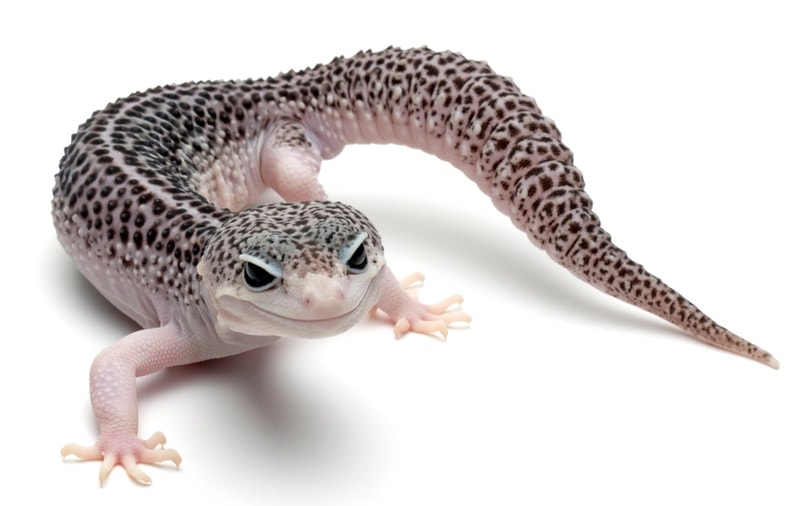
Appearance
Leopard Geckos are a wide-ranging species that comes in many different colors. As the name suggests, the Super Snow Leopard Gecko is white in color with black spots. All of these lizards are rather small. Females are about 18 to 20 cm in length, while males are slightly bigger at 20 to 28 cm. They weigh very little as well, with males only reaching 80 grams at the most.
Unlike most other lizard species, this one cannot climb smooth vertical walls. They lack lamellae, so they don’t have the adhesive suction necessary to climb these smooth surfaces.
These lizards regrow their teeth every 3 to 4 months. Next to every full-grown tooth is another slightly smaller tooth as a replacement. They have an odontogenic stem cell in their mouth that allows them to continuously regrow their teeth as necessary.
Like many lizards, Leopard Geckos can break off their tails to deter predators. The idea is that the predator will go after the twitching tail instead of the actual lizard. Their tails are unusually thick and can be used to store up food in some circumstances. “Fat” lizards will often have very large tails. If their tail is lost, they can regrow it. However, this tail is often stumpy and will never look like the original tail.
How to Take Care of a Super Snow (Mack) Leopard Gecko
Habitat, Tank Conditions & Setup
Tank
At least a 20-gallon tank is recommended for housing one or two Leopard Geckos. Hatchlings can be kept in smaller tanks, but it is often just easier to purchase a larger tank from the beginning. These lizards grow quite quickly, so they will quickly outgrow their smaller, hatchling-size tank.
Larger tanks are not recommended, as these lizards tend to stray and “get lost”. They may be unable to find their food source and hiding places.
The particular dimensions of the cage do not matter very much. However, they should be at least one foot tall. It should have a secure top to prevent outside visitors. The top should be a screen that can support a light fixture. A screen will also provide better ventilation, which is important for preventing diseases.
You can add live and decorative plants as necessary, but these aren’t really required.
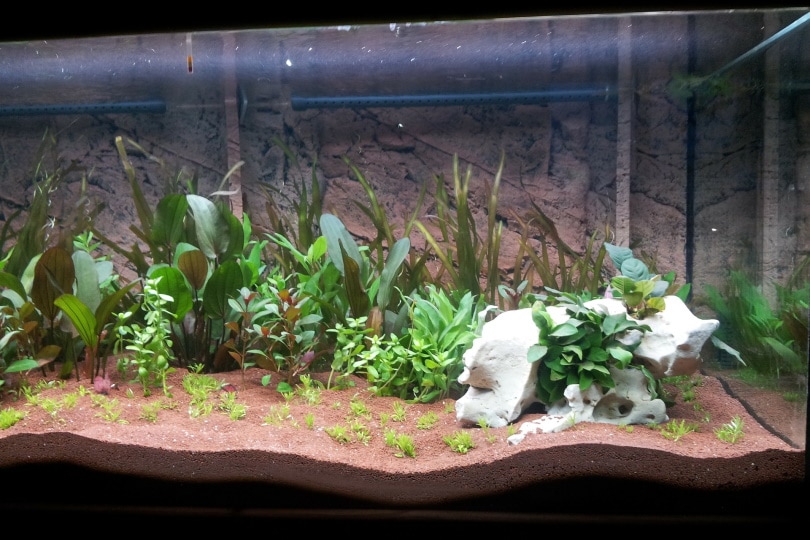
Lighting
These lizards don’t necessarily need a heating lamp or anything of that sort. Heat rocks and similar supplies are not recommended either. They can be too hot for Leopard Geckos, causing burns and similar problems.
A low-wattage viewing light can be used if you’re having difficulty seeing your lizard. You should only leave these on for a maximum of 12 hours a day, though. Otherwise, it can disrupt the lizard’s natural sleep cycles.
These lizards are active at night, so they do not need UVB like most other lizards.
Heating
The best way to heat the tank is through the use of an under-tank heating pad. Heat one end of the tank to allow for temperature differences, which provides your lizard with the ability to adjust its temperature as possible. The perfect temperature is 88 to 90 degrees inside the hide box at all times, while the ambient temperature should be about 73 degrees.
Substrate
These lizards are not very particular about their substrate needs. They usually do perfectly fine with newspaper, pea gravel, artificial turf, stones, or not flooring at all. We do not recommend sand or other very fine particles, as the lizard can consume them accidentally. This can cause impaction and similar issues.
You should avoid potting soils and sands as well. Many of these contain fertilizers and pesticides that can harm your lizard.
Usually, Leopard geckos will choose to use the bathroom at one corner of their cages. This part will need to be spot-cleaned, but this can often be done without disrupting the rest of the cage.
| Tank Type | 20-gallon tank with a screen top |
| Lighting | N/A; viewing light optional |
| Heating | Heat pad or tape |
| Best Substrate | Newspaper, artificial turf, stones, pea gravel |
Feeding Your Super Snow (Mack) Leopard Gecko
This species is strictly carnivorous, so they only eat live bugs. They cannot eat plants or veggies, unlike some other lizards. The best meal items are mealworms and crickets, as these provide the most nutrition per calorie. Waxworms and superworms may be provided once a week as treats, but these are often a bit too fatty for most uses. They also cannot be fed pinky mice or similar food items.
All insects should be gut-loaded with a supplement 12 hours before being fed to your lizards. This ensures that your lizard is getting the proper nutrients, as they will end up eating whatever the insects have recently eaten. There are several commercial insect foods that are perfect for this use.
You can also dust the insects with a supplement. When your lizard eats the insect, they will eat the powder that they have been dusted with as well. Be sure not to get the powder into the gecko’s eyes as you are feeding them.
Many geckos will also lick up a mineral supplement if one is provided in a feeding dish. Usually, the gecko will know how much they need and supplement accordingly.

Diet Summary
| Fruits | 0% of diet |
| Insects | 100% of diet |
| Meat | 0% of diet |
| Supplements Required | General lizard supplement |
Keeping Your Super Snow (Mack) Leopard Gecko Healthy
With the proper care, these lizards are usually quite healthy. They are one of the easiest lizard species to care for and are not prone to many health issues.
Common Health Problems
Most health problems are diet-related. For instance, malnutrition can be a serious problem if they are not fed correctly. Hypovitaminosis A can occur without proper supplementation.
Lifespan
These lizards can live up to 10 to 20 years in captivity. In the wild, they usually live about 15 years. Be sure you are committed to caring for a lizard for two decades before deciding to adopt one.
Breeding
Female leopard geckos lay a clutch of eggs every 15 to 22 days in a four- to five-month period. Females can lay 80 to 100 eggs over their lifetime. If more than one female is present, they will all lay their eggs in the same spot. An egg-laying box should be provided for this purpose.
Breeding is only possible during the breeding season. Males have a mating ritual that involves a tail-vibration routine. Mating itself only takes two to three minutes, at what time the male can be removed.
Are Super Snow (Mack) Leopard Geckos Friendly? Our Handling Advice
You should not handle them on a regular basis, especially right after adoption. Lizards over 6 inches can be handled with care. It is best to sit on the floor while handling your lizard, as this prevents droppage. You should never grab them by their tail, or it may drop off.
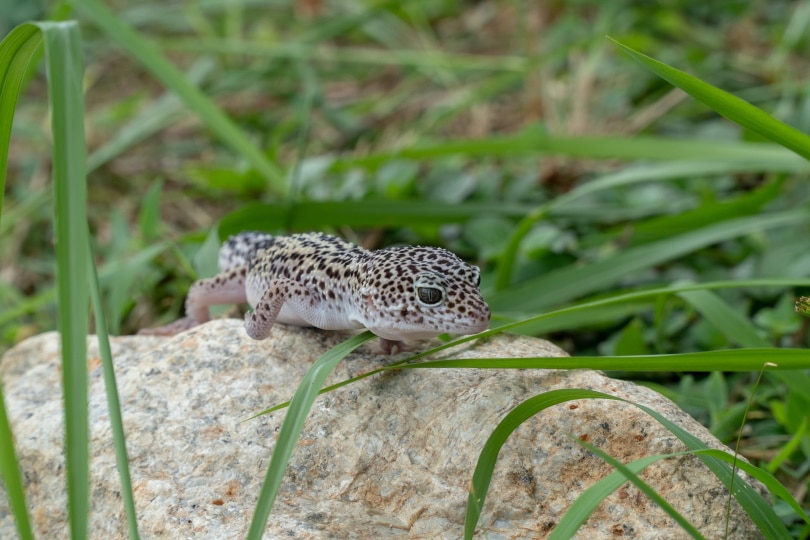
Shedding & Brumation: What to Expect
Young leopard geckos will shed about every week or two. Adults will only shed every one to two months. As long as the gecko has a proper diet, you should not be worried too much about the shedding process.
Brumation is an optional behavior, and most geckos in captivity do not experience it.
How Much Do Super Snow (Mack) Leopard Geckos Cost?
Due to their rarer coloration, these lizards usually cost between $140 to $350. Their quality and overall appearance may play a huge role in their price.
Care Guide Summary
Final Thoughts
The Super Snow Leopard Gecko has a very striking coloration that sets it apart from others of its species. These lizards are fairly easy to care for and can be kept in a 20-gallon tank with ease. They don’t require some of the specialized care that other lizards do, such as UVB and heating lamps.
Overall, these are a good starter pet, though their coloration does make them a bit more expensive than other leopard geckos.
Featured Image Credit: Safwan Abd Rahman, Shutterstock


